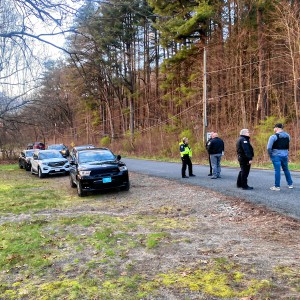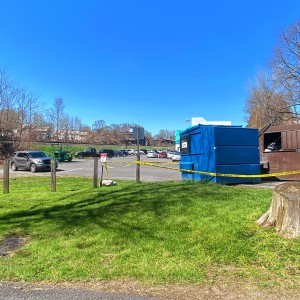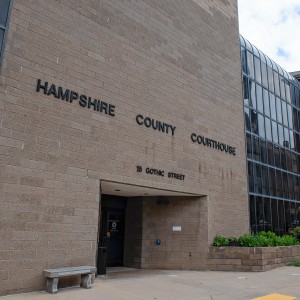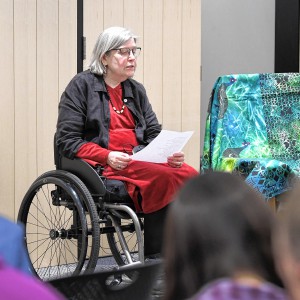Between the Rows: Ashfield artist creates informative botanical booklets
| Published: 03-01-2019 2:00 PM |
Ashfield resident Beverly Duncan has been overwhelmed with new ideas since her retirement from Mohawk Trail Regional School, something that is evidenced by the decorated walls of her studio.
One wall is covered with framed botanical paintings. Other paintings-in-progress and smaller paintings of flower blossoms are pinned to two bulletin boards. Surrounded by these works, finished and unfinished, she told me about recent events and unfinished plans.
Since her arrival in western Massachusetts many years ago, she has focused on drawing plants. First intrigued by wild edibles, she enlarged her focus to drawing and painting the local flora and fauna around her. She hardly had to go beyond her own gardens and the nearby woodlands.
The attention she pays to what is sprouting, blooming, ripening and going into dormancy, as well as the insects that arrive over the seasons, is transformed into delicate paintings.
“As I observe, sketch and paint, I am always learning more about the interconnectedness of the natural world,” she said.
Her love of flowers and greenery are put to a different use during the summers. She works with Gloria Pacosa, a dear friend and neighbor, who operates Gloriosa & Co., an event venue. Pacosa has large gardens to supply the flowers and plants for the weddings, bat and bar mitzvahs, and all the other celebratory events that mark our lives. That means working in the gardens and gathering an abundance of flowers and greens to make unique bouquets, adding to the joy of the celebratory occasions of our lives.
Early last spring, Duncan and Pacosa decided to treat themselves to a trip to Belgium. They attended a workshop run by a commune-owned chateau, Fleuropean.
“Every day for a week, we made bouquets with flowers that showed off the new trends in design, and in flower color, which were in the dark range,” she said. “Some of the arrangements were very stylized, not looking like bridal bouquets or lush arrangements at all. We also got to work with silk ribbons that were dyed and sometimes shredded.
Article continues after...
Yesterday's Most Read Articles
 Police report details grisly crime scene in Greenfield
Police report details grisly crime scene in Greenfield
 On The Ridge with Joe Judd: What time should you turkey hunt?
On The Ridge with Joe Judd: What time should you turkey hunt?
 New buyer of Bernardston’s Windmill Motel looks to resell it, attorney says
New buyer of Bernardston’s Windmill Motel looks to resell it, attorney says
 Greenfield man arrested in New York on murder charge
Greenfield man arrested in New York on murder charge
 Man allegedly steals $100K worth of items from Northampton, South Deerfield businesses
Man allegedly steals $100K worth of items from Northampton, South Deerfield businesses
 Joannah Whitney of Greenfield wins 33rd annual Poet’s Seat Poetry Contest
Joannah Whitney of Greenfield wins 33rd annual Poet’s Seat Poetry Contest
Refreshed and inspired by both the workshop and her travels, including a walk through a forest among bluebells, Duncan returned home to continue her projects with new energy.
“I love working in small places,” Duncan said. She brought out two tiny boxes of her paint-a-flower-every-day project. Each box is filled with 2-inch by 2-inch flower or foliage paintings, labeled on the reverse side. Another box held tiny accordion booklets, each devoted to a single flower.
Then Duncan showed me the “SEEDS project.” These 5-inch by 5-inch booklets are each devoted to a single tree or shrub. She created a standard progression of the development of a plant and seed on the vertical pages.
“I tell the story of my relationship with the tree. Then I paint the details of the tree from early spring budding,” she explained. “Everything is dated so the time of the progression is clear. Another page will show the summer leaf. That is the way most of us identify a tree, by its leaf. On other pages I show the fruit development, and change in the color of the leaf. The winter page painting shows identifying characteristics of the branch and bud.”
We looked through the “SEEDS” booklet about staghorn sumac. Duncan paints the parts of the plant in clear detail. She also names the part of the sumac. While I might call the slightly fuzzy red things on the end of an autumnal sumac branch a “flower,” Duncan properly calls them the mature seeds, or fruits, of the sumac, which are called “bobs.” She explained that bobs are actually clusters of drupes, which is a closed fruit with exocarp, mesocarp and endocarp layers that enclose the ovary.
I had a little trouble understanding the anatomy of a sumac drupe. However, her drawing made me look up some additional information. I learned that apricots, cherries and other stone fruits are drupes because they have a fleshy covering around the pit that can be opened to reveal the actual seed. Some nuts like almonds, walnuts and pistachios are drupes, while other nuts like acorns and chestnuts are in the family of “true” nuts.
Duncan’s goal is to reproduce these booklets, and to have boxed sets holding five or six little booklets that can be sold. I am looking forward to that day.
The “SEEDS” project is very different from her earlier works, in the size of the paintings. These little booklets also allow her to express her reactions and feelings about plants. Her intent is very different from her approach to larger botanical works like her award-winning “New England Winter Branches” paintings.
Duncan has an agent in New York City who sells her paintings there, but she does occasionally hold open studios when her paintings are available for public view and sale. She also teaches botanical painting at the Hill Institute in Florence.
Pat Leuchtman has been writing and gardening since 1980. Readers can leave comments at her website: commonweeder.com.
]]>

 Speaking of Nature: Indulging in eye candy: Finally, after such a long wait, it’s beginning to look like spring is here
Speaking of Nature: Indulging in eye candy: Finally, after such a long wait, it’s beginning to look like spring is here Celebrating ‘Seasonings’: New book by veteran preacher and poet, Allen ‘Mick’ Comstock
Celebrating ‘Seasonings’: New book by veteran preacher and poet, Allen ‘Mick’ Comstock Faith Matters: How to still the muddy waters of overthinking: Clarity, peace and God can be found in the quiet spaces
Faith Matters: How to still the muddy waters of overthinking: Clarity, peace and God can be found in the quiet spaces A time for every purpose under heaven: Free sing-a-long Pete Seeger Fest returns to Ashfield, April 6
A time for every purpose under heaven: Free sing-a-long Pete Seeger Fest returns to Ashfield, April 6
